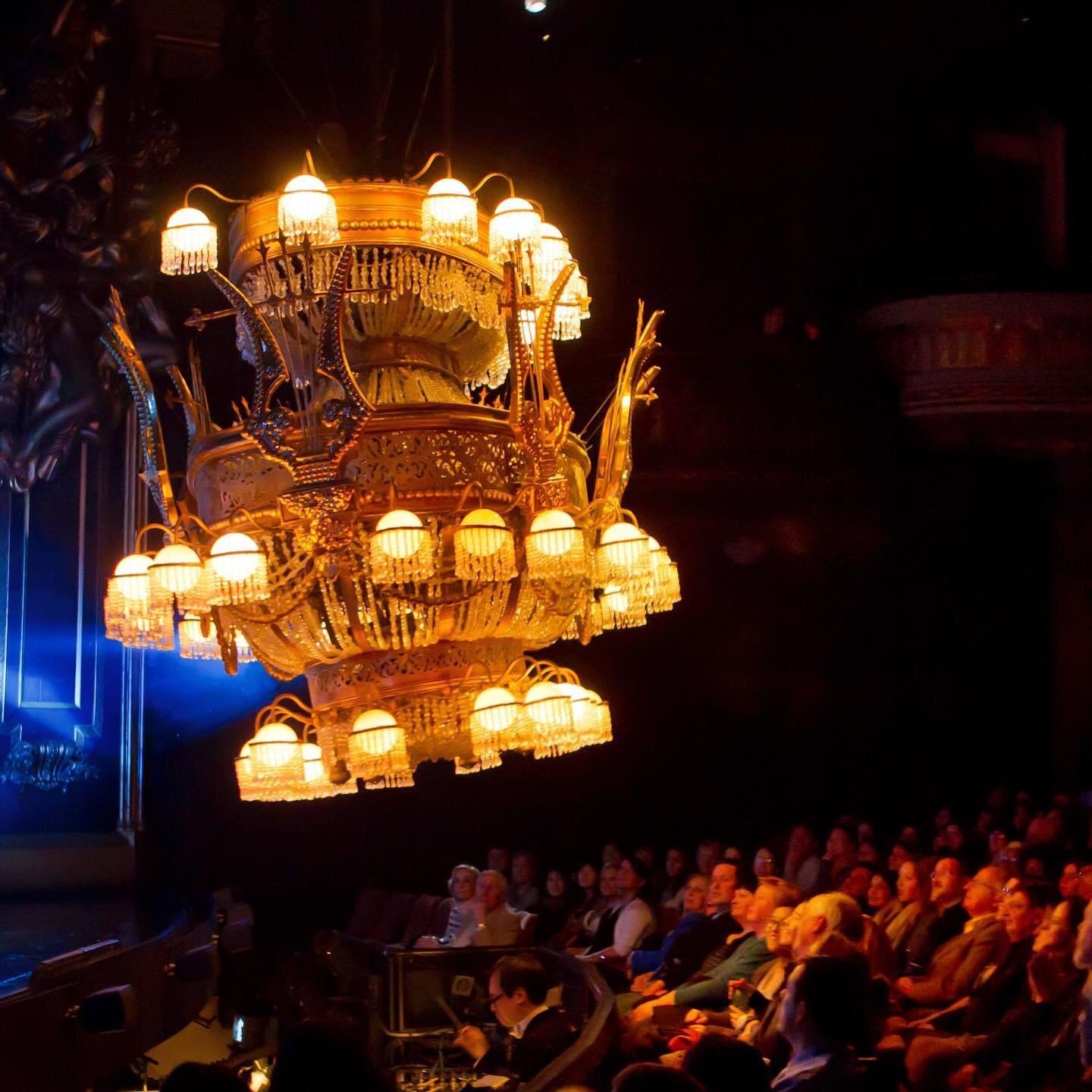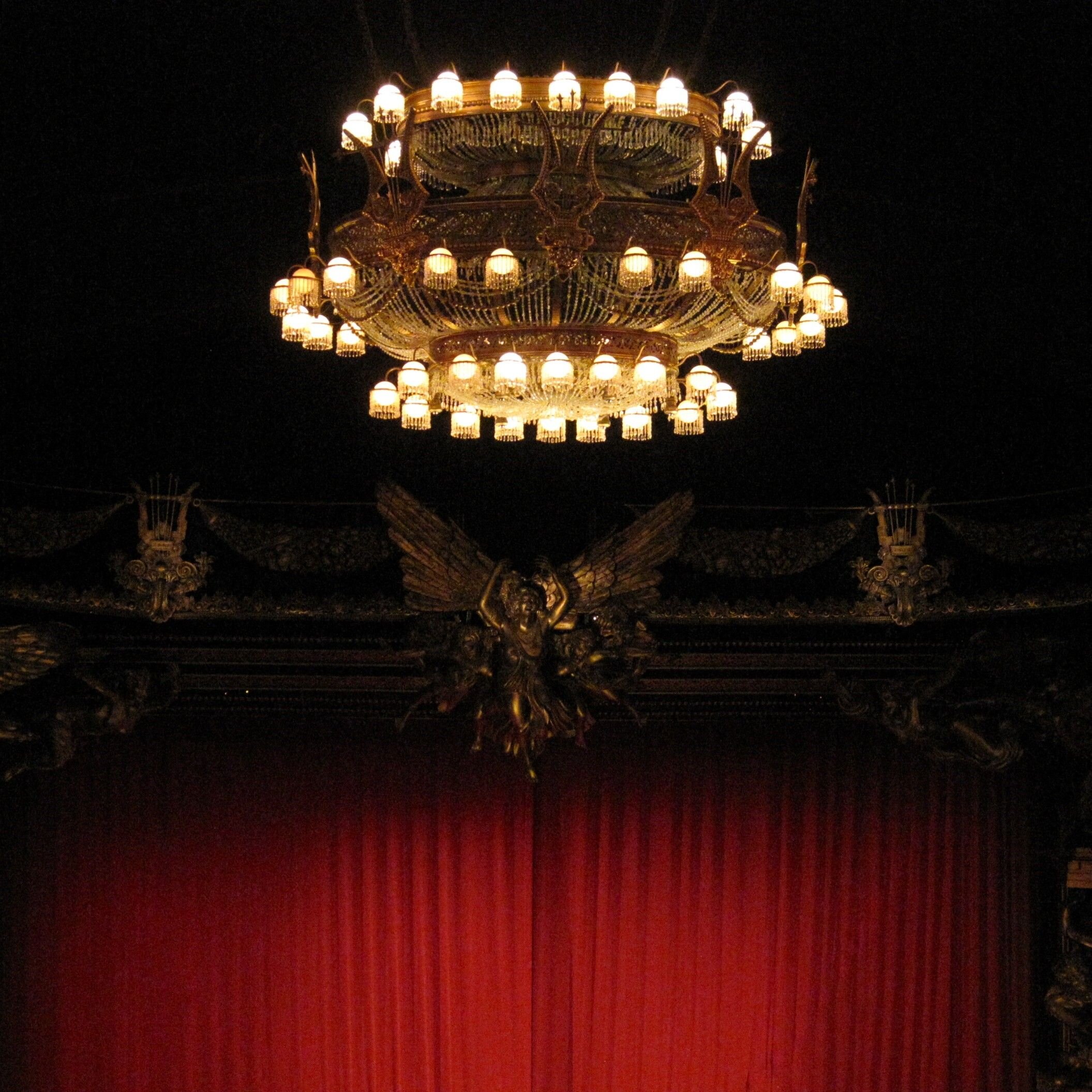My very first experience with musical theater happened in1990. I was fourteen. My grandmother took me to see Andrew Lloyd Webber’s masterpiece, The Phantom of the Opera. I remember being dropped off by my father at Roosevelt’s Auditorium Theater, in the South Loop of downtown Chicago. My grandma Sally stood waiting for me. I was so excited I was shaking. It was finally happening.
The lobby was crowded with people all dressed up to see the most spectacular show in town. I had no idea what I was in for. The music had cast a spell over me long before I had ever seen the show. When I finally sat down in those balcony seats with my grandmother, little would I have guessed what would happen next.
The auditorium went quiet. The striking of a gavel! The show began. In what is now musical theater legend, a grand and ominous chandelier rose from the floor of the theater stage to the top of the ceiling. I will never forget that moment. It was in that moment that I became obsessed with it (the chandelier), and remain so to this day.
The opening set for The Phantom of the Opera.
I would see Phantom (not to be mistaken with Kopit & Yeston’s Phantom, although I saw that one too) several dozen more times, including a stint as an usher for the show at Chicago’s Lyric Opera in 1998. I would watch the chandelier rise and fall dozens of times, for free. Some days I arrived to work early, walking into the empty theater. The chandelier would be lowered for safety checks. Stagehands covering the proscenium, making sure the candles below the stage rose up properly. All of it was literally magic before my eyes.
The unveiled set and props for The Phantom of the Opera original production.
Years later, my interest would never wane. I would see the show in 2007, and then again in 2015, at the Pantages theater in Hollywood. Much like my first experience in 1990, little would I know what I was in for. My reaction would not be the same.
By this point I had seen every behind-the-scenes Phantom documentary I could find. I had purchased The Complete Phantom of the Opera hardback book years earlier, reading it front to back, several times over. I knew how the curtains were made. I knew how many wooden beads were sewn into each swathe of fabric. I knew how much the chandelier weighed, how long it took to put together, and how it was rigged. I had become my very own expert. A real Phan, you could say.
When the digital curtains rose on the new USA tour, I was aghast.
The chandelier in the brilliant original was an icon. It is not only a featured and beloved prop, it is as much a character in the show as The Phantom himself is. In this new iteration, produced by Cameron Mackintosh, the penultimate chandelier had been scrapped, replaced by a new version rendered essentially static. Instead of rising from the stage, to the top of the theater, a cloth dropped from it and it lit up.
What had been an iconic moment in the biggest show in Broadway’s history had been turned into a cheapened gimmick. The driving force behind the re-staging and redesign has been over copyright fees. Reimagining the show skirted those fees, while also killing what made the show so unique special.
The newly imagined Masquerade number, sans staircase.
The role of the chandelier in the brilliant original production should be immutable. The chandelier had its own cue, taking center stage as the Phantom commanded it to fall in a fit of rage. The cloud of lights would spark and glow descending over the audience, crashing back on to the stage, completing the first act. Nowhere could you see this kind of spectacle and lavish stagecraft. The design of the chandelier as intended by Maria Bjornson is as stalwart as the Phantom’s mask.
In this new version, the redesigned and much smaller chandelier blinked, shook, sparked, dropping a few feet, just as the lights went out. Adding insult to injury, costumes were also replaced with newer less interesting designs, despite the show being promoted as retaining designer Maria Bjornson’s original costumes. Sets were paired way back and restaged to make the show cheaper to tour with.
The resulting show may sound like Lloyd Webber’s Phantom, but comparisons end there. While being able to understand needing a cheaper version of this iconic show to tour, the result is a show that is respectfully not what Webber, Bjornson, nor original director Hal Prince had intended. In place of the sumptuous and illustrious curtains and props stood mirrors with digital projections. Gone was the decadent proscenium. Gone were the stairs leading up to the foyer of Garnier’s Opera House. The Phantom of the Opera had been hollowed out.
There has been a grumbling from Phans and theatergoers that something has been amiss. You need only to read the comments section via Phantom official social media outlets to see what people are saying. Much of it has to do with the latest tour, and concern that when the show returns to Her Majesty’s theater in London’s West End, it will not be Bjornson’s original staging or design, yet most importantly, one of the stars of the show, the grand chandelier will remain uninspired and static. Rather it would continue to peddle a cheapened version of the show.
The question on everyone’s mind right now is whether or not when the show opens again in June of 2021, will the chandelier be restored to its rightful part, ascending from the stage and crashing back again? This question is not only asked of the London version, but the new world tour that will be making its way around when Covid measures allow.
Official outlets have not answered.
The Last US tour of Les Miserables.
Les Miserables, another blockbuster show, also produced by Mackintosh underwent a similar redesign for a new tour. I was able to catch this new tour in Chicago a few years back, before moving to Los Angeles. It was amazing. It was amazing because Les Mis is about the music and the story, and less about the staging.
Andrew Lloyd Webber’s The Phantom of the Opera became what it is because of the original staging, and because of the chandelier. The original staging IS the show. Changing or altering that has changed the show. Full stop. The original staging of Phantom IS Phantom. Cameron Mackintosh, Andrew Lloyd Webber and their investors must understand this.
The chandelier must rise again.
Jaime Prater @soundgoasunder






